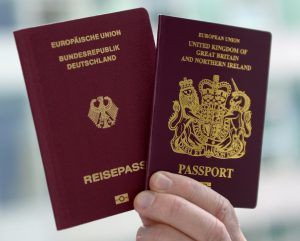Navigating the world of German wine can be a complex journey, especially when it comes to understanding the labels. German wine labels are packed with information, but they can often seem like a puzzle to those unfamiliar with the language and the labeling system. This comprehensive guide aims to demystify German wine labels, making it easier for … [Read more...]
Education in Germany: A Comprehensive Overview
Germany, known for its robust economy and rich cultural history, also boasts one of the world's most admired education systems. This comprehensive overview of education in Germany covers the structure, philosophy, and opportunities within this system, making it a valuable resource for international students, educators, and parents alike. Table … [Read more...]
All Facts About Germany: A Comprehensive Guide to the Country
Germany, officially known as the Federal Republic of Germany, is a country located in the heart of Europe. Known for its rich history, cultural heritage, technological advancements, and stunning landscapes, Germany is a fascinating country that attracts millions of visitors each year. In this article, we will explore various aspects of Germany, … [Read more...]
The Rise of Monastic Winemaking in Germany: German Medieval Wine Culture
Germany, renowned for its rich winemaking traditions, has a fascinating history deeply intertwined with the monastic communities that flourished during the Middle Ages. This period witnessed the rise of monastic winemaking, contributing to the development of German medieval wine culture. In this article, we delve into the captivating story of how … [Read more...]
A Sip Through Time: Unveiling the Fascinating History of German Wine
The story of German wine is a captivating journey through centuries of tradition, craftsmanship, and innovation. From the rolling vineyards along the Rhine and Mosel rivers to the quaint winemaking villages nestled in the valleys, Germany has been an integral part of the wine world for over a millennium. In this article, we explore the rich history … [Read more...]
German Flag Origin
The German flag is a striking symbol of the country's history, embodying a story that spans centuries. The flag's black, red, and gold stripes represent not only the nation but also the journey of its people. This article delves into the origins, evolution, and significance of the German flag, highlighting how it came to symbolize unity, freedom, … [Read more...]
Reinheitsgebot
The Reinheitsgebot, literally "purity order", sometimes called the "German Beer Purity Law" in English, is a series of regulations limiting the ingredients in beer in Germany and the states of the former Holy Roman Empire. The best-known version of the law was adopted in Bavaria in 1516, but similar regulations predate the Bavarian order, and … [Read more...]
How to Get a Work Permit for Germany
Obtaining a work permit for Germany is not always easy. Your success in the application process depends on various factors: your nationality, your occupation, even your annual salary. Here are the key aspects that you have to keep in mind. General Considerations Over the past few years, the German government has tried to encourage the migration … [Read more...]
How to Move to Germany
If you do not want to completely say goodbye to your own country in order to live in Germany, permanent residency to guarantee you can stay long-term might be a better bet. Taking up residency in Germany can be a tricky topic that involves a fair bit of paperwork. This article will list the most common types of German residence permits and explain … [Read more...]
German Dual Citizenship
While most nationalities must denounce their nationality in order to get German citizenship, German law permits certain people to hold two citizenships in certain circumstances. German dual citizenship can be granted in the following situations: Children with one German and one foreign parent, or a parent who has two citizenships, … [Read more...]
- 1
- 2
- 3
- 4
- Next Page »









